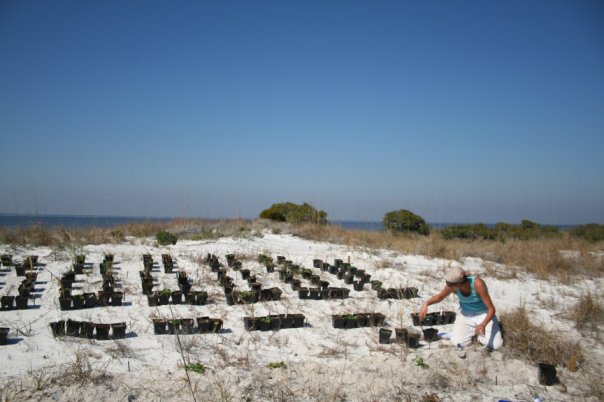St. George Island
Restoration
Use of Census Data to Inform and Implement Restoration of Gulf Dune Vegetation
Coastal regions along the Gulf of Mexico provide vital habitat for an array of wildlife, including threatened and endangered species. Hurricanes and tropical storms have historically affected the coast in Apalachicola Bay about every three years; the storm surge and associated heavy rains and winds can greatly change existing dune morphology and vegetation dynamics. Understanding changes in vegetation on dunes in response to storms and predicted climate change will be necessary to effectively manage these susceptible coastal areas.
Vegetation on St. George Island in the Apalachicola NERR has been quantified annually since 1999 by T. Miller. We have used the data base to identify six plant species that are either resistant to storm effects or respond positively following storms. We are currently conducting several transplant experiments to test the prediction that these species may be useful for restoring damaged coastal areas. Individuals of these six species have been transplanted into several different dune microhabitats and are monitored bi-monthly for survival and growth. Results of this work will help both local and regional reserve managers to implement efficient and cost-effective methods of coastal vegetation restoration.
Although this research focuses on St. George Island, the results from this project can be extrapolated across a broader geographic range by using the current long-term data to inform remote censusing methodologies. We will investigate the potential for combining the vegetation analyses from St. George with broader GIS-based data, such as LIDAR, to extend the results to coastal environments across the southeastern Atlantic and Gulf of Mexico coastlines.
